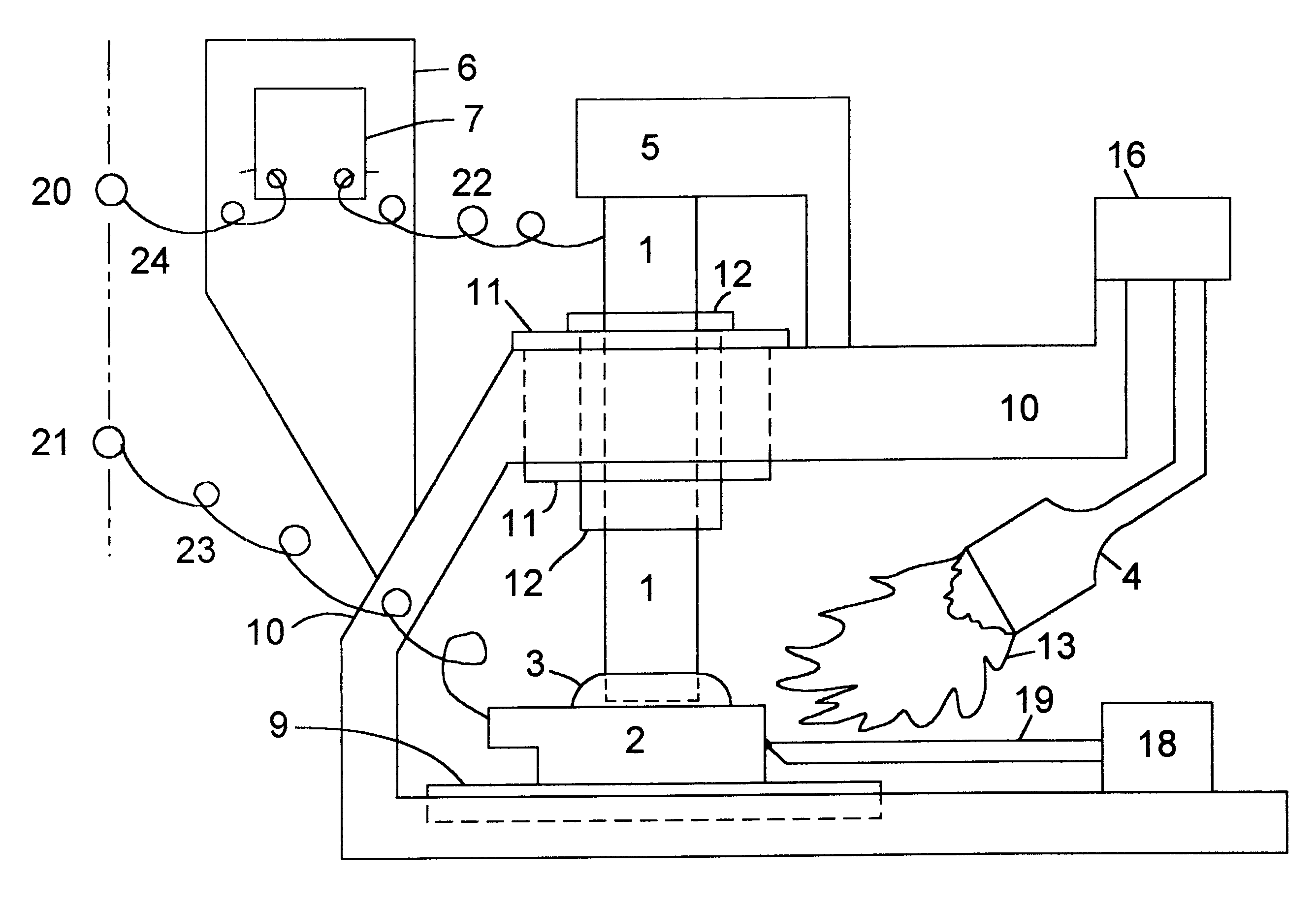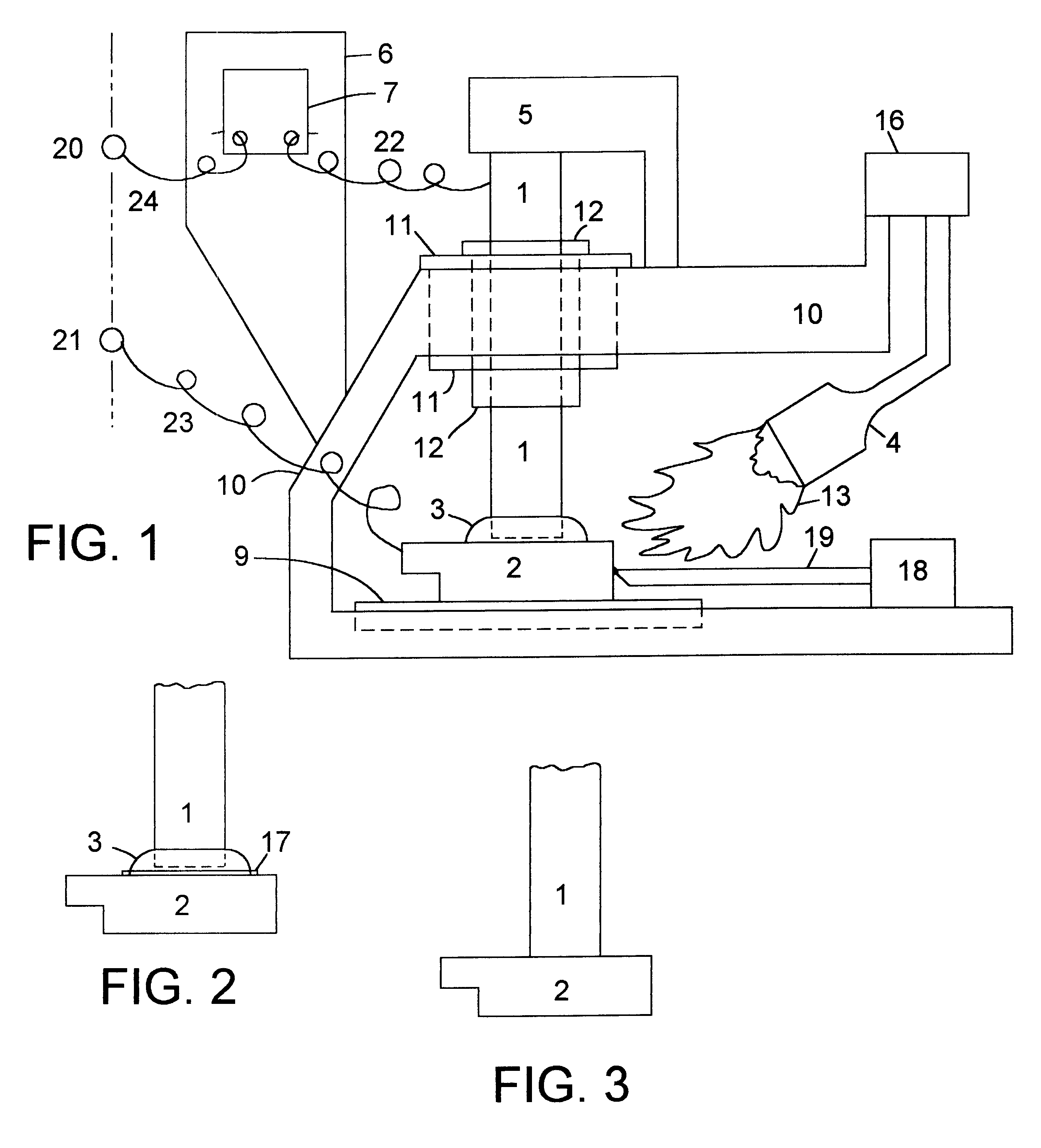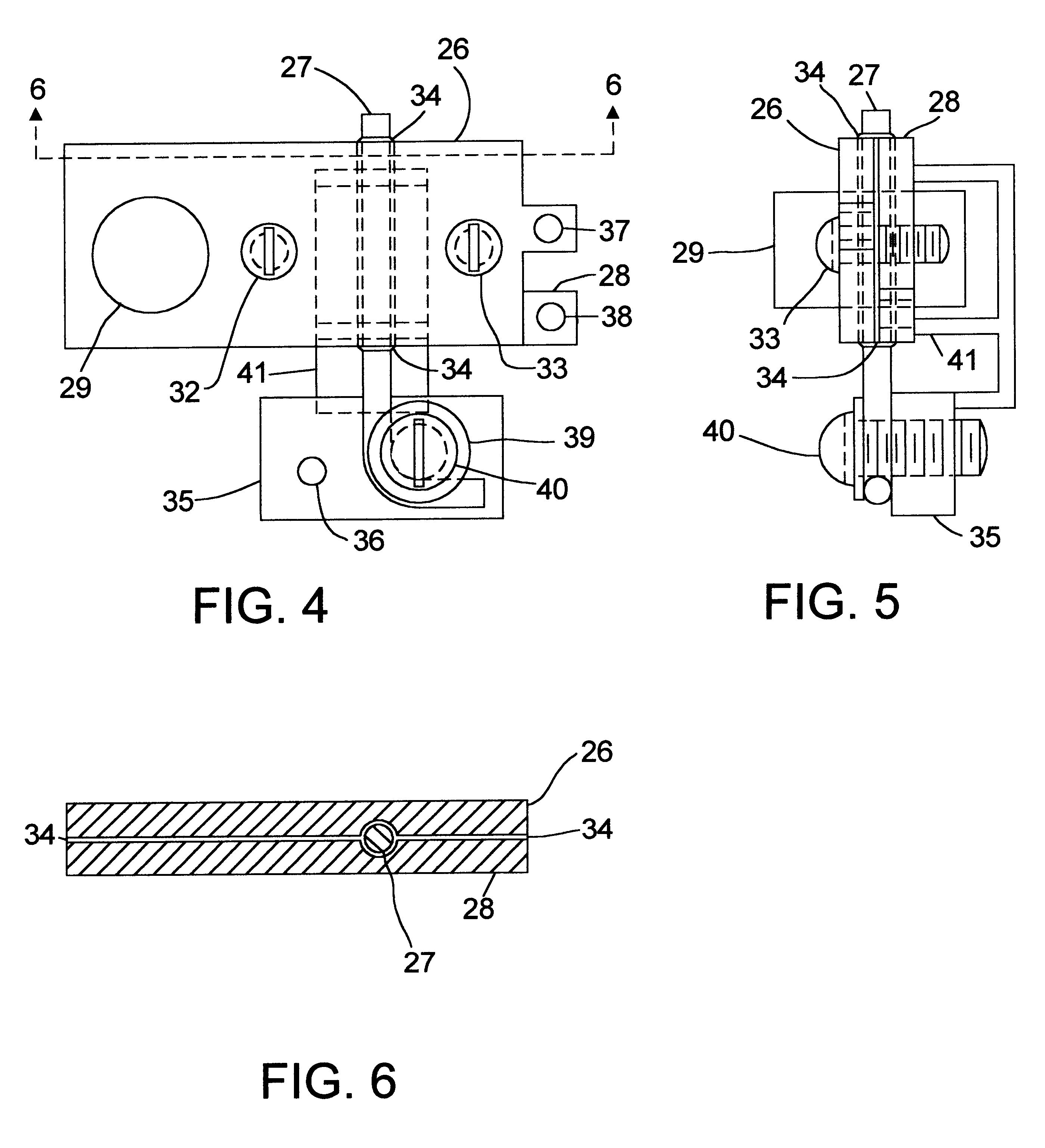High temperature battery and electrolytes
a high-temperature battery and electrolyte technology, applied in the field of high-temperature batteries, can solve the problems of molten black compound smelling so foul, electrical connections are most likely to overheat and glow,
- Summary
- Abstract
- Description
- Claims
- Application Information
AI Technical Summary
Problems solved by technology
Method used
Image
Examples
Embodiment Construction
The preferred embodiment of the high temperature battery in accordance with the present invention is with copper as the metal of the cathode or positive electrode of each cell and aluminum as the metal of the anode or negative electrode of each cell. Both these metals have low electrical resistivity, which is expected to contribute toward a very desirable, low internal resistance for the battery, and both the metals are abundant and low-cost. Other metals of higher electrical resistivity which have been tested successfully are: nickel, iron and tin. It is believed that still other metals, metal alloys and metallic substances can be used as electrodes to make a high temperature battery in accordance with the present invention. The electrical resistivity, in microohm-centimeters at 20.degree. C., of some metals selected for illustration, not intending to exclude others, are: m copper: 1.771; aluminum: 2.824; gold: 2.44; silver: 1.59; iron: 10; nickel: 7.8; magnesium: 4.6; phosphor-bro...
PUM
| Property | Measurement | Unit |
|---|---|---|
| voltage per cell | aaaaa | aaaaa |
| melting point | aaaaa | aaaaa |
| density | aaaaa | aaaaa |
Abstract
Description
Claims
Application Information
 Login to View More
Login to View More - R&D
- Intellectual Property
- Life Sciences
- Materials
- Tech Scout
- Unparalleled Data Quality
- Higher Quality Content
- 60% Fewer Hallucinations
Browse by: Latest US Patents, China's latest patents, Technical Efficacy Thesaurus, Application Domain, Technology Topic, Popular Technical Reports.
© 2025 PatSnap. All rights reserved.Legal|Privacy policy|Modern Slavery Act Transparency Statement|Sitemap|About US| Contact US: help@patsnap.com



